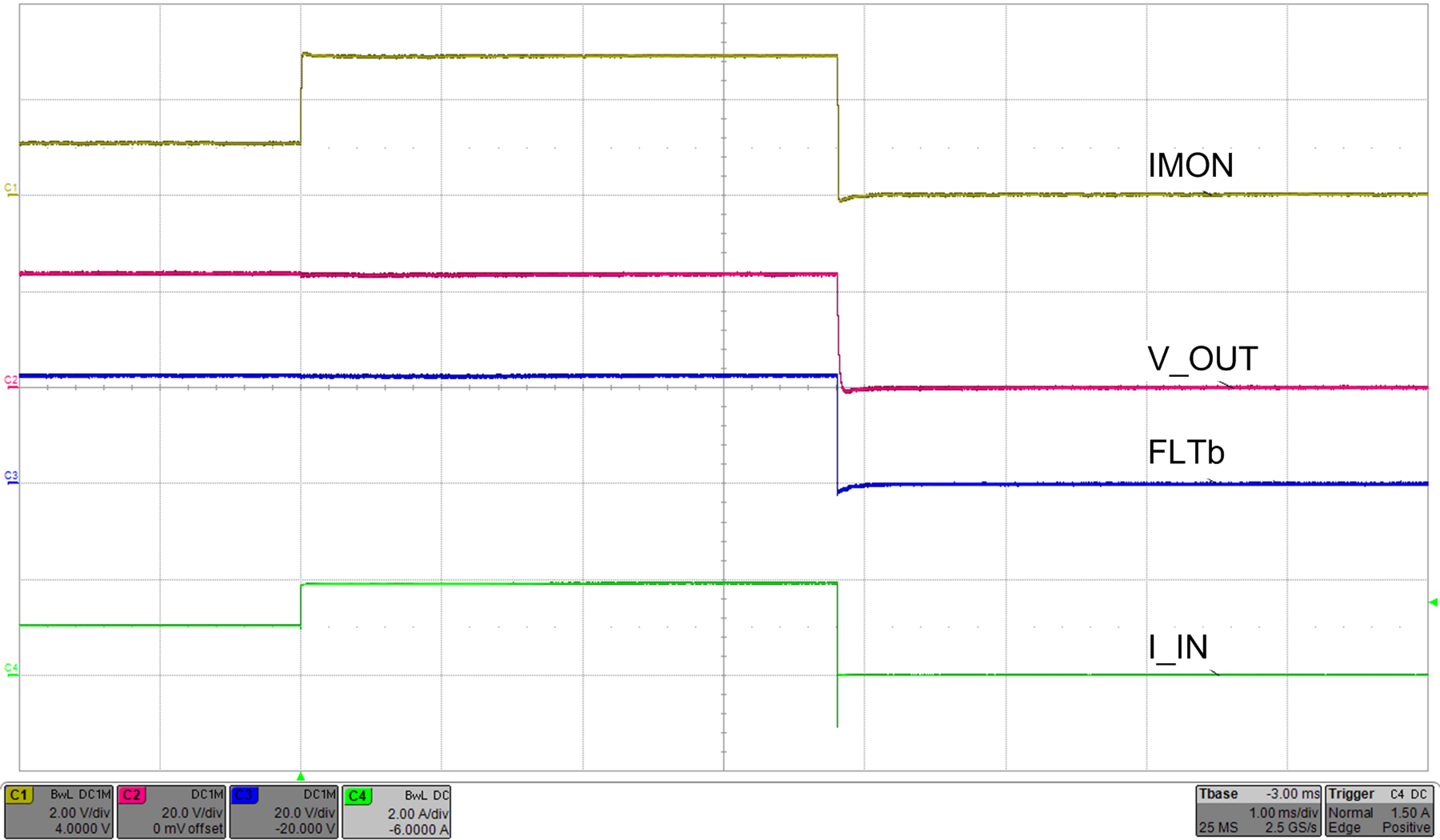SLVSEM1A March 2019 – September 2019 LM76202-Q1
PRODUCTION DATA.
- 1 Features
- 2 Applications
- 3 Description
- 4 Revision History
- 5 Pin Configuration and Functions
- 6 Specifications
- 7 Parameter Measurement Information
-
8 Detailed Description
- 8.1 Overview
- 8.2 Functional Block Diagram
- 8.3
Feature Description
- 8.3.1 Undervoltage Lockout (UVLO)
- 8.3.2 Overvoltage Protection (OVP)
- 8.3.3 Reverse Battery Protection
- 8.3.4 Hot Plug-In and In-Rush Current Control
- 8.3.5 Overload and Short Circuit Protection
- 8.4 Device Functional Modes
-
9 Application and Implementation
- 9.1 Application Information
- 9.2
Typical Application
- 9.2.1 Design Requirements
- 9.2.2 Detailed Design Procedure
- 9.2.3 Application Curves
- 10Power Supply Recommendations
- 11Layout
- 12Device and Documentation Support
- 13Mechanical, Packaging, and Orderable Information
Package Options
Mechanical Data (Package|Pins)
- PWP|16
Thermal pad, mechanical data (Package|Pins)
- PWP|16
Orderable Information
8.3.5.1.2 Electronic Circuit Breaker with Overload Timeout, MODE = OPEN
In this mode, during overload events, the device allows the overload current to flow through the device until I(LOAD) < I(FASTRIP). The circuit breaker threshold I(CB) can be programmed using the R(ILIM) resistor, as shown in Equation 5.
Equation 5. 

where
- I(CB) is circuit breaker current threshold in A
- R(ILIM) is the current limit resistor in kΩ
The device commences an auto-retry cycle after a delay of tCBretry(dly). The FLT signal remains asserted until the fault condition is removed and the device resumes normal operation. Figure 33 and Figure 34 illustrate behavior of the system during electronic circuit breaker with auto-retry functionality.

| MODE left floating | Load Transition from 22 Ω to 12 Ω | |
| RILIM = 8 kΩ | ||

| Load Transition from 22 Ω to 12 Ω , RILIM = 8 kΩ | ||